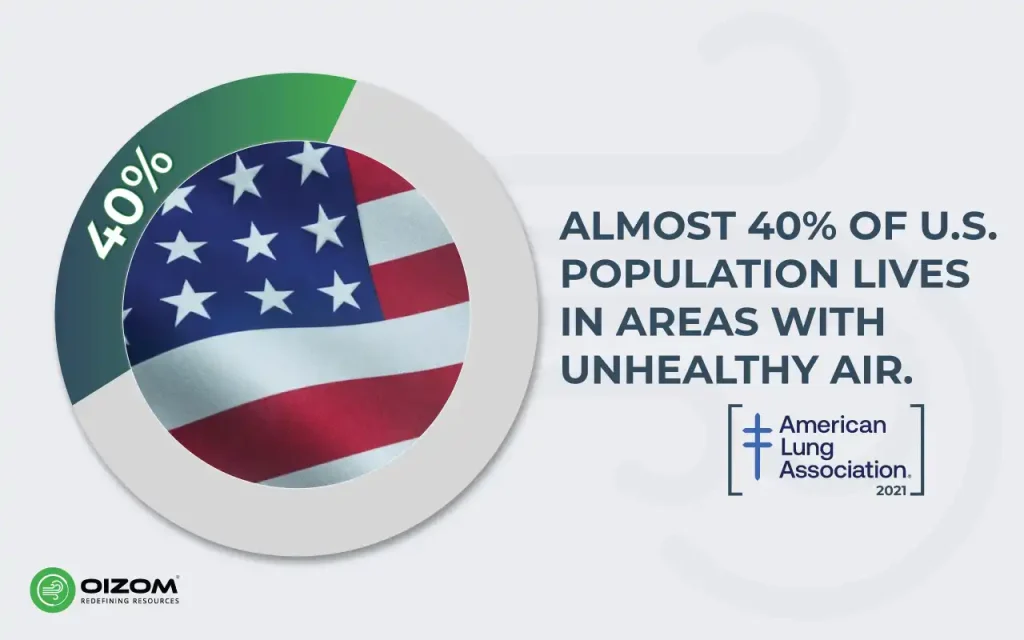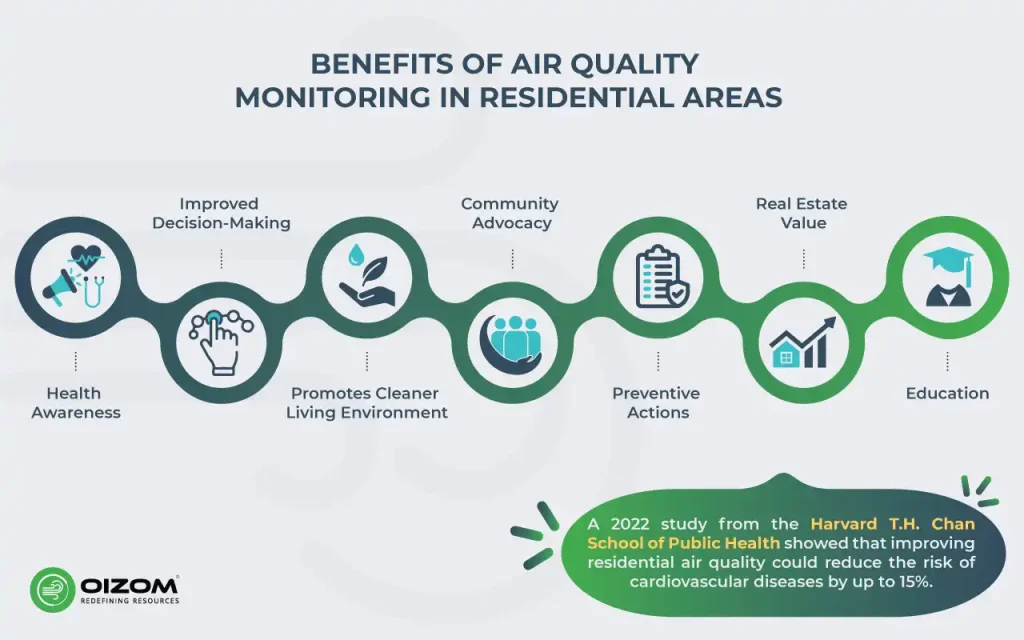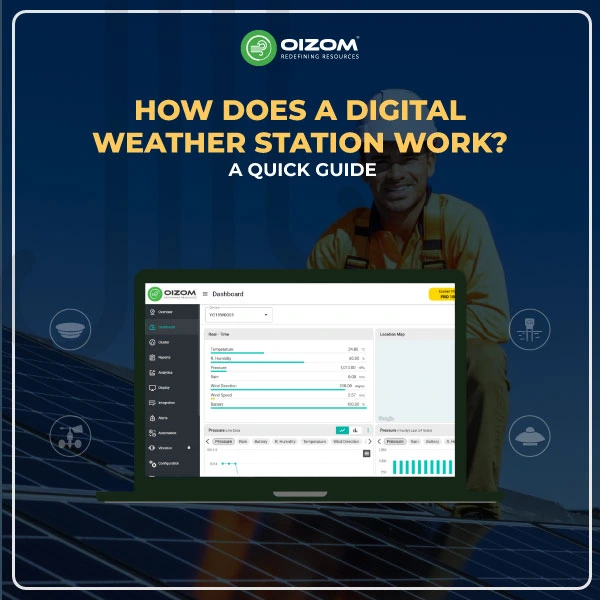Our homes are our sanctuaries. We rely on them to provide a safe, healthy environment for us and our loved ones. However, the air quality in our residential areas may not be as pristine as we believe. From particulate matter to volatile organic compounds (VOCs), our indoor and outdoor air quality teems with potential health hazards.
Air quality monitoring in residential areas has never been more critical. A study from the American Lung Association (2021) found that almost 40% of the U.S. population lives in areas with unhealthy air. Consequently, the demand for reliable air quality monitoring systems has seen an exceptional rise in the last two years.

Parameters for Air Quality Monitoring
Air quality monitoring involves measuring various parameters that define the quality of the air in a given environment. Here are some key parameters:
- Particulate Matter (PM): From the tiniest to the visible dust parameters like PM1, PM2.5, PM10, and PM100, they are harmful when inhaled. We tend to breathe these tiny dust particles even without noticing them.
- Nitrogen Dioxide (NO2): This gas, commonly produced by motor vehicles and power plants, can cause respiratory issues and contribute to the formation of smog.
- Sulphur Dioxide (SO2): This gas is produced by volcanic activity and industrial processes, particularly the burning of fossil fuels. It can cause respiratory problems and contribute to the formation of acid rain.
- Carbon Monoxide (CO): This deadly, colourless, and odourless gas is produced by the partial burning of fossil fuels and wood. High levels of CO can cause headaches, dizziness, vomiting, and even death.
- Ozone (O3): At ground level, ozone is a harmful pollutant that can cause respiratory problems and other health issues. It is a key component of smog.
- Volatile Organic Compounds (VOCs): These are a large group of chemicals that are released from certain solids or liquids, including paints, cleaning supplies, and pesticides. VOCs can cause health problems, including eye, nose, and throat irritation, headaches, and damage to the liver, kidney, and central nervous system.
- Air Temperature and Humidity: These are not pollutants, but they are important factors that can affect the concentrations and effects of pollutants in the air. This can also arise situations of thermal discomfort.
- Carbon Dioxide (CO2): While typically not a direct health risk at ambient levels, monitoring CO2 levels can be important for understanding climate change and indoor air quality, as high indoor CO2 levels can lead to complaints of stuffiness and discomfort.
Methods and Technologies
Air quality monitoring is a critical practice to understand and mitigate environmental pollution. Here are some essential methods and technologies, with a focus on how Oizom’s products fit into the landscape:
- Satellite Observations: Remote sensing technology has revolutionised the way we monitor air quality is monitored at the global and micro levels. Satellites can detect the presence of various airborne pollutants such as sulphur dioxide, nitrogen dioxide, carbon monoxide, and particulate matter. They provide extensive spatial coverage, giving researchers and policymakers an invaluable tool for assessing air pollution levels and trends, even in areas with limited ground-based monitoring capabilities.
- Ground-Based Monitoring Stations: These are the traditional way of measuring air quality. Ground-based stations are equipped with analyzer-based systems designed to detect and quantify a wide range of air pollutants, including both gases and particulate matter. The data from these stations provide a high level of detail over time, making it possible to track daily, seasonal, and annual trends in pollution levels.
- Chemical Transport Models: These are sophisticated computational tools that model the emission, movement, and chemical transformation of air pollutants in the atmosphere. They can offer a thorough grasp of the sources that contribute to air pollution, its transportation, dispersion, and deposition in the environment, as well as its effects on air quality at the local, regional, and global levels.
- Low-Cost Sensor Networks: With the advent of miniaturised, low-cost air quality sensors, it is becoming increasingly feasible to deploy large networks of sensors to monitor air quality at the community level. These sensors can provide real-time data, allowing for quick responses to emerging pollution events, and extend spatial coverage beyond that of traditional monitoring stations.
Oizom’s air quality monitors employ cutting-edge sensor technology to provide highly accurate measurements of a wide range of air pollutants. Furthermore, these devices offer cloud-based data access and analytics. This real-time data accessibility and in-depth analysis capabilities enable users to make timely and data-driven decisions aimed at improving environmental health and safety. Not only this but with Oizom’s devices, you can even automate your dust suppression methods and take quick actions to mitigate the dust without even being present there. You can learn more about our devices’ features here.
- Personal Air Quality Monitors: These compact, portable devices provide individuals with real-time information about the air quality in their immediate surroundings. As concern about the health impacts of air pollution grows, these devices are also becoming a popular tool for personal health risk assessment.
- Integrated Air Quality Monitoring Systems: Integrated systems take a holistic approach to air quality monitoring, combining data from a variety of sources. This can include satellites, ground-based stations, low-cost sensor networks, and even meteorological data. Such systems provide a more complete and accurate understanding of air pollution dynamics.
- Mobile Monitoring Platforms: These innovative solutions use vehicles equipped with air quality sensors to monitor pollution levels over large urban areas. This enables a more extensive spatial coverage and can also be useful in identifying and responding to pollution hotspots.
- Drone-Based Air Monitoring: Drones, or unmanned aerial vehicles (UAVs), equipped with air quality sensors, can provide air pollution data from otherwise inaccessible locations. They can fly at various altitudes to give a vertical profile of air pollutants, providing insights into the vertical distribution of pollution.
- Machine Learning and AI Models: Advanced machine learning and artificial intelligence algorithms can be used to predict future air quality levels based on historical data, current measurements, and weather patterns. These predictive models can provide early warnings of potential air pollution events, allowing authorities to take preventive action.
Benefits of Air Quality Monitoring in Residential Areas

A 2022 study from the Harvard T.H. Chan School of Public Health showed that improving residential air quality could reduce the risk of cardiovascular diseases by up to 15%.
- Health Awareness: Monitoring air quality can alert residents to potentially harmful conditions. High pollution levels can exacerbate conditions like asthma, allergies, and other respiratory diseases.
- Improved Decision-Making: When residents are aware of the air quality, they can make informed decisions about when to exercise outside, when to open windows, or when more vulnerable individuals should stay indoors.
- Promotes Cleaner Living Environment: Tracking the levels of pollutants over time can help identify the sources of pollution. Once these sources are identified, appropriate actions can be taken to reduce or eliminate them, promoting a cleaner living environment.
- Community Advocacy: Consistent air quality monitoring can provide data that residents can use to advocate for cleaner air initiatives at the local or even national level.
- Preventive Actions: During situations like wildfire smoke or a pollution spike, real-time air quality monitoring can help residents take preventive measures to protect their health.
- Real Estate Value: Homes in areas with good air quality may have higher real estate values. Regular air quality monitoring can support this valuation.
- Education: It provides an opportunity for residents, especially young people, to learn more about the environment and the importance of clean air.
Benefits of Using Oizom’s Air Quality Monitors for Residential Areas
- Accurate Air Quality Measurement: Oizom’s air quality monitors provide accurate data on various environmental parameters such as PM2.5, PM10, CO2, humidity, temperature, noise, etc. This comprehensive data can help you understand the air quality around your residence.
- Real-time Monitoring: These monitors offer real-time air quality monitoring. This allows you to take immediate action when air quality degrades, thereby protecting the health of you and your family.
- Easy-to-Understand Data Visualisation: Oizom’s data platform – Our air quality monitoring system Envizom, provides visual reports and graphs that make it easier to understand the air quality trends in your area.
- Health Protection: Poor air quality can lead to numerous health issues. By monitoring and understanding air quality, you can make necessary changes in your lifestyle to reduce exposure to pollutants. This will eventually reduce the health risks, such as long-term exposure leading to premature deaths.
- Smart Home Integration: Oizom’s air quality monitors can often be integrated with other smart home systems, providing a cohesive experience for residents. You can make data-driven decisions like when to open windows, when to run air purifiers, etc.
- Historical Data Analysis: The monitor stores historical air quality data that can be used for analysis. This can help you identify patterns, predict potential future issues, and plan accordingly.
- Easy Installation and Maintenance: Oizom’s devices are designed for easy installation and require minimal maintenance, making them user-friendly for residential purposes.
- Environmental Impact Awareness: Using these monitors can increase awareness about the environment. This can potentially inspire you and your community to take action towards reducing pollution.
- Alerts and Notifications: The system can be set to send alerts when certain air quality thresholds are crossed. This allows you to react quickly to deteriorating air quality conditions.
- Flexible Accessibility: Access your air quality data from anywhere through Amazon’s mobile app or web dashboard. This means you can monitor the air quality of your residential area remotely, which is especially useful when you’re away or on vacation.
With devices like AQBot, one can have a display of dust concentrations for everyone to see and take preventive actions.
Knowing the quality of air in your residential area allows you to take proactive measures to improve it. This can range from installing air purifiers, using certain types of houseplants that absorb pollutants to improving home ventilation.
Oizom’s Case Study for Residential Area
About Central Park, Gurgaon
Central Park in Gurgaon, India, is a high-end residential complex advocating for sustainable living. It hosts luxury residences amidst sprawling green spaces and is equipped with advanced air purification systems, solar panels, and rainwater harvesting infrastructure.
The Problem
The area around Central Park struggles with severe air pollution, often breaching safe air quality indexes. With contributors like motor vehicles and industrial activities, the harmful air quality is causing severe health problems, including lung cancer, in the region.
The Solution
To combat this, Central Park installed Oizom’s Dustroid, an advanced dust monitor, for tracking real-time air quality parameters. This has enabled the development of effective pollution control policies and empowered residents with actionable air quality data, steering the community towards a healthier living environment.
Explore more case studies.
Conclusion
As the saying goes, knowledge is power. The more we understand about our air quality, the better equipped we are to protect our health and the well-being of our loved ones. So let’s breathe easy, knowing we’re taking every measure to ensure our residential areas provide the clean, fresh air we deserve. The era of residential air quality monitoring has arrived, and it’s here to stay.






